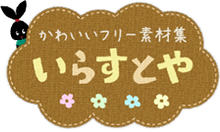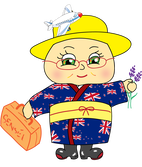Verb Tenses
Which Tense When?
The Non-Past Tense - ~ます Form and Plain Form
The non-past tense is used to talk about both the present (to say what someone does / doesn't do) and the future (to say what someone will / won't do). We have to use context (clues in the conversation) to know if someone is talking about the present or the future.
- Words like いつも (always), よく (often) are about the present - what someone does.
- Words like あした (tomorrow), らいねん (next year) are about the future - what someone will do.
|
Non-past ~ます (masu) Form:
Positive:
ばんごはん に よく さかな を たべます。
あした レストラン で たべます。
Negative:
あまり バス に のりません。
あした バス に のりません。
|
Vertical Divider
|
Non-past Plain Form:
Positive:
ばんごはん に よく さかな を たべる。
あした レストラン で たべる
Negative:
あまり バス に のらない。
あした バス に のらない。
|
The Present Continuous Tense - ~ます Form and Plain Form
We use the present continuous tense in two different ways:
- something taking place at the moment. E.g. "I am eating my lunch at the moment" - I'm in the middle of doing this thing, and I'm not finished.
- actions or situations that are continuous, that aren't finished. E.g. "I live in Tokyo", or "I work at a convenience store" - this is the situation with my life right now, this is how things are.
- Use the て form + いる/いない (plain form) or います/いません (-masu form)
|
Present Continuous ~ます (masu) Form:
Positive:
いま、ひるごはん を たべて います。
ゆうびんきょく で はたらいて います。
きょう、あめ が ふって います。
Negative:
いま、あさごはん を たべて いません。
ぎんこう では はたらいて いません。
|
Vertical Divider
|
Present Continuous Plain Form:
Positive:
いま、ひるごはん を たべて いる。
ゆうびんきょく で はたらいて いる。
きょう、あめ が ふって いる。
Negative:
いま、あさごはん を たべて いない。
ぎんこう では はたらいて いません。
|
The Past Tense - ~ます Form and Plain Form
This one isn't rocket science. The past tense is used to talk about actions that began and finished in the past (to say what someone did). However, if you want to talk about what someone used to do, scroll down to the past continuous.
Examples:
Examples:
|
Past Tense ~ます (masu) Form:
Positive:
きのう、あさごはん に トースト を たべました。
学校 に 行きました。
Negative:
バス に のりません でした。
|
Vertical Divider
|
Past Tense Plain Form:
Positive:
きのう、あさごはん に トースト を たべた。
学校 に 行った。
Negative:
バス に のりません でした。
|
The Past Continuous Tense - ~ます Form and Plain Form
We use the past continuous tense very similarly to the way we use it in English:
Forming the past continuous:
- something that was taking place over a period of time in the past. E.g. "Yesterday at 1 p.m. I was eating my lunch in the classroom" - the inference here is that I probably began at some point before that, I was still doing it at that time, and I hadn't yet finished.
- E.g. "I lived in Tokyo for three years", or "I worked at a convenience store last year" - this was the situation with my life at that time, that is how things were.
- e.g. "I used to play netball", or "I used to go to school by bus".
Forming the past continuous:
- Use the て form + いた/いなかった (plain form) or いました/いません でした (-masu form)
|
Past Continuous Tense ~ます (masu) Form:
Positive:
むかし ネットボール を やって いました。
3年間 東京 に すんで いました。
きのう 1時に きょうしつ で ひるごはん を たべて いました。
Negative:
きっさてん で コーヒー を のんで いません でした。
|
Vertical Divider
|
Past Continuous Tense Plain Form:
Positive:
むかし ネットボール を やって いた。
3年間 東京 に すんで いた。
きのう 1時に きょうしつ で ひるごはん を たべて いた。
Negative:
きっさてん で コーヒー を のんで いなかった。
|

